"The Classic of Mountains and Seas" is an ancient book from the pre-Qin period. The book covers various aspects of ancient mythology, geography, animals, plants, minerals, witchcraft, religion, history, medicine, folk customs and ethnic groups. According to statistics, there are 277 species of animals recorded, including tiger, leopard, deer, bear, wolf, dog, rabbit, pig, horse, monkey, ape, orangutan, rhinoceros, ox, pig, deer, and muntjac. , species, dolphins, yu, antelopes, sheep, Elephants-Are-Endangered.html">elephants, snakes, mole, leopard, zi, camel, otter, fox, rice, stag, etc., as well as Nikou, Bifang, Dijiang, holuo fish, birds, crocodiles, etc. 狌. It is a book of historical value. So what are the top ten man-eating beasts in Shan Hai Jing? Let’s take a look.
The list of the top ten man-eating and strange beasts in the Classic of Mountains and Seas is mainly based on some of the records of strange beasts in the famous book "The Classic of Mountains and Seas". "The Classic of Mountains and Seas" is an ancient book on strange things, and most of the strange beasts involved are myths and legends. Whether it exists or not remains to be investigated, so this article only shares common sense. The list is for reference only. If you have any questions, please pay attention and leave a message at the end for communication.

1. Tengu
Tengu, an animal in ancient Chinese folklore. It was first recorded in "Shan Hai Jing". The original text is: "Three hundred miles to the west, it is called Yin Mountain. The water of the turbid bath comes out and flows south to Fanze. There are many shells and beasts in it, called Tiangu, and its shape It has a white head like a raccoon dog, and a sound like a pomegranate, which can ward off evil." As mentioned in the article, the Tengu is an animal that looks like a wild cat with a white head, and is a lucky beast to ward off evil. It is probably some kind of ancient mammal. Animals do exist. But later it evolved to describe comets and shooting stars. The ancients regarded stars flying in the sky as very unlucky, so Tengu also became the name of an evil star.
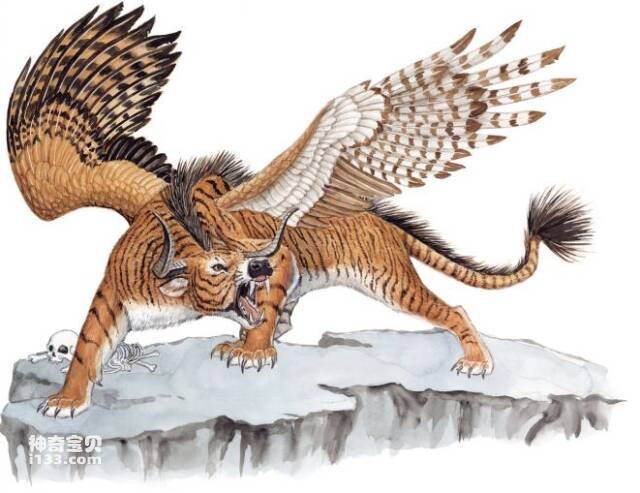
2. Qiongqi
Qiongqi is one of the four ancient evils in Chinese myths and legends. It is mainly recorded in "The Classic of Mountains and Seas". "The Classic of Mountains and Seas: Hai Nei Bei Jing" states that Qiongqi looks like a tiger with a pair of wings and likes to eat people. It even eats from the head of a person. It is a ferocious beast. However, also in the "Book of Mountains and Seas", the "Book of Mountains and Seas Xishan Jing" mentions another image of Qiongqi. The Qiongqi in this chapter looks like a cow with hedgehog hair, which is similar to "Hai Nei Nei". There are great differences between those described in the Northern Classic. However, both are ferocious beasts that like to eat people, so there is no difference in this aspect.
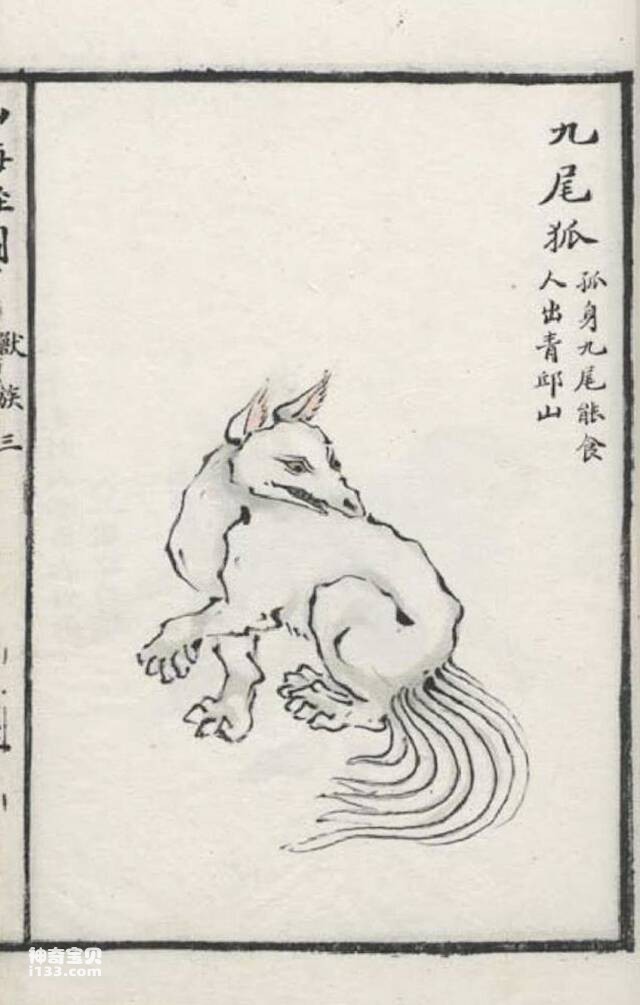
3. Nine-tailed fox
The nine-tailed fox is a monster image in traditional Chinese mythology and folklore. It is considered to be a fox monster that can turn into a beautiful woman. Its name comes from its nine tails, each additional tail said to increase its strength and wisdom. In legends, the nine-tailed fox is usually described as a very beautiful, intelligent and cunning being. It is good at transformation and illusion. It can control wind, rain, snowfall and guide spiritual energy. It also has the ability to cure diseases and exorcise evil spirits. However, due to its coquettish appearance and dangerous nature, the nine-tailed fox is often regarded as an ominous creature, and its association with humans often brings misfortune and bad luck. The image of the nine-tailed fox plays a very important role in Chinese culture. It not only appears in literary works, paintings, movies and other art forms, but also has a profound impact on many aspects of Chinese culture and society, such as poetry, drama, medicine, Taoism, etc. . "The Classic of Mountains and Seas" says: "There is a beast in the mountains of Qingqiu. It looks like a fox with nine tails, and its voice is like a baby. It can eat people, and those who eat it are not poisonous."
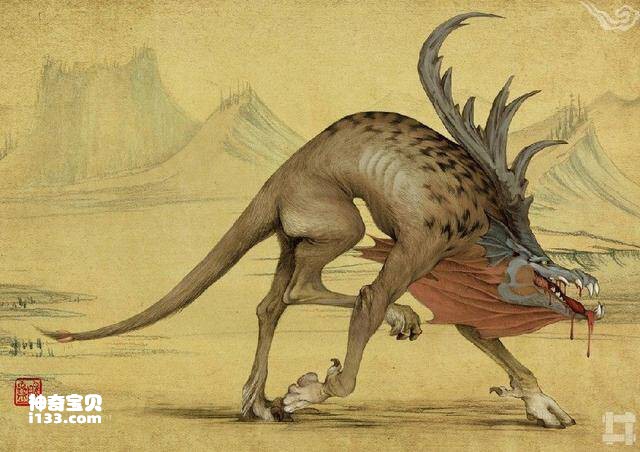
4. Gu carving
"The Book of Mountains and Seas Nanshan Jing" records: "Five hundred miles to the east, there is Mount Luwu. The water from Zegeng flows out of Yanshui, and the Nanliu flows into Pangshui. There are animals in the water, called Gudiao, and they look like sculptures. It has horns, its sound is like that of a baby, and it is a cannibal.” Gu Diao, also known as Zhuan Diao, is a man-eating monster that looks like a bird but not a bird. It looks like a vulture, has horns on its head, and its cry is like a baby's cry. Nowadays, archaeologists have unearthed a pure gold hawk-beaked deer-shaped beast body monster from the Xiongnu tomb in the late Warring States period at Gaotu Village in Nalin, Shaanxi Province. Its shape is similar to the Gu sculpture in "The Classic of Mountains and Seas". This kind of shape has the characteristics of typical northern grassland culture. According to legend, the voodoo sculpture has the special ability to spit out voodoo poison, which can be used to attack enemies or curse someone. At the same time, it can also control natural elements such as water, fire, and wind, and can theoretically control everything in the world at will.
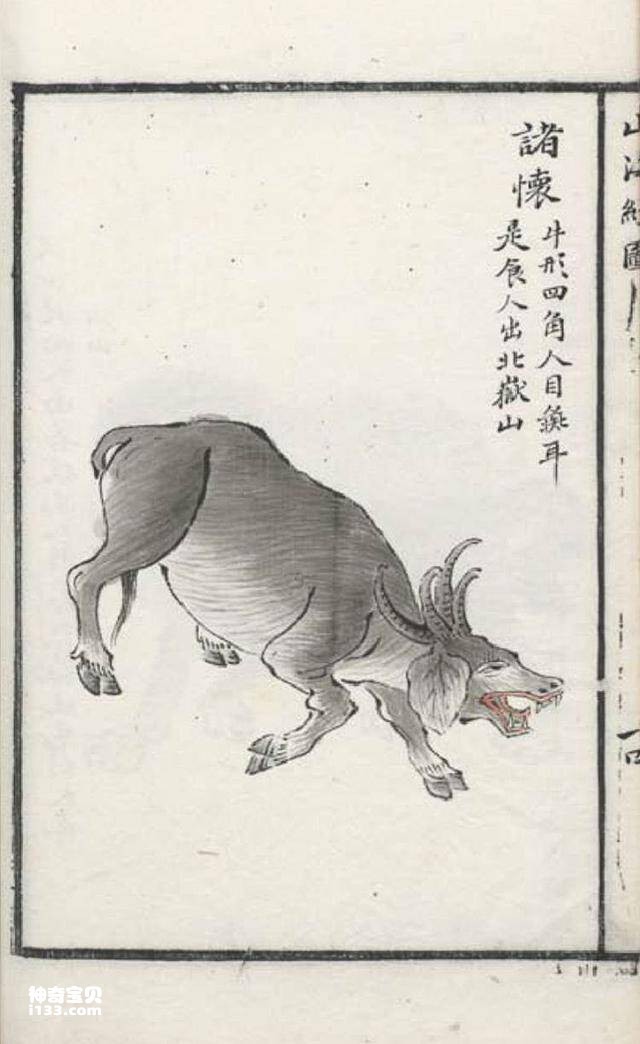
5. Zhuhuai
Zhu Huai is a monster in ancient Chinese mythology. According to the "Book of Mountains and Seas: Beishan Jing", Zhu Huai looks like a cow, has four horns, human eyes and pig ears, can make sounds like flying geese, and likes to eat people. Although some literature describes Zhu Huai as being in the form of a wild boar, this view is not widely accepted. In ancient documents and works of art, Zhu Huai is usually depicted as a strange bull-shaped monster with powerful demonic power and ferocious character. Although Zhuhuai is a fictional creature in mythology, its image and legend still influence many aspects of Chinese culture, such as literature, painting, sculpture and other art forms, as well as folk tales.
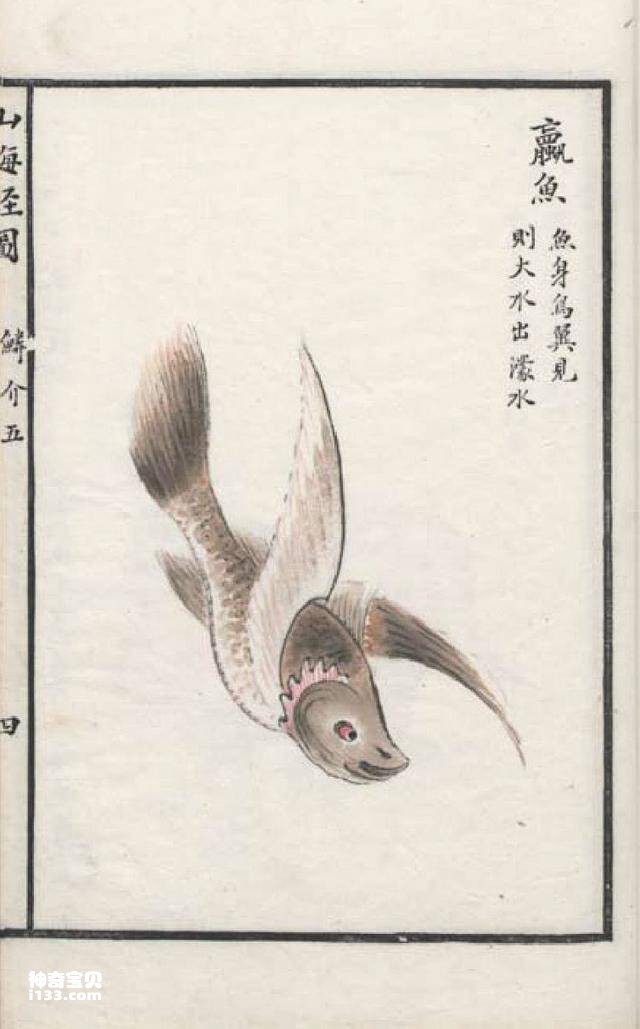
6. Earfish
The cockroach fish is a mythical creature in "The Classic of Mountains and Seas". It looks like a fish but has bird wings, and can make bird calls like a mandarin duck. According to the "Book of Mountains and Seas: Beishan Jing", wormfish often appear near Mount Gui, and whenever they appear, they will cause floods. Mount Gu is located in the middle of the Qinling Mountains in ancient China. It is a famous local mountainous area and is famous for its beautiful scenery and rich natural ecological resources. Mengshui is a small stream on Qiushan Mountain. There are many yellow clams at the source. It flows through Qiushan Mountain and merges into Yangshui. However, whenever the cockroach appears, it causes ocean waters to surge, causing large-scale floods. Although the cockroach is only a fictional creature in "The Classic of Mountains and Seas", it still has a certain symbolic meaning in ancient Chinese culture and is regarded as a symbol and warning of natural disasters.
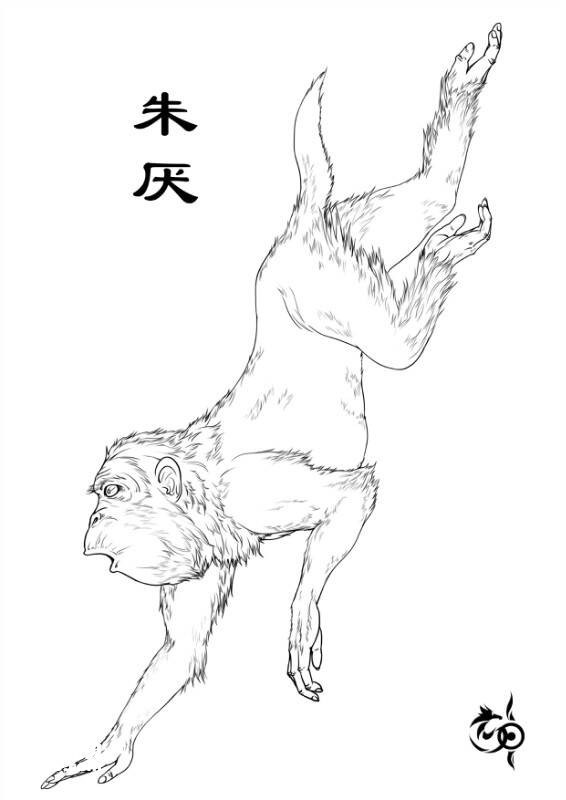
7. Zhu Yan
Zhu Yan is a ferocious beast in Chinese mythology. It is said that its body shape is similar to that of an ape, with a white head and red feet. Like Fu Hou, Zhu Yan is regarded as symbolizing the occurrence of war. It is said that as long as Zhu Yan appears, a large-scale war will break out in the world. In addition, there is another theory that Zhu Yan is actually an ape. It has clean hair and can run quickly. It usually takes two forms: one is a monkey shape, and the other is a human-faced monkey body. In Chinese mythology, Zhu Yan is a very powerful being, and his appearance often heralds the outbreak of war or the coming of disaster. Therefore, people often regard it as an ominous thing and hope to avoid its appearance. Although the shape and characteristics of Zhu Yan may be slightly different in different versions, it is always a mythical character with strong symbolic significance, representing people's fear and vigilance against war and disaster.
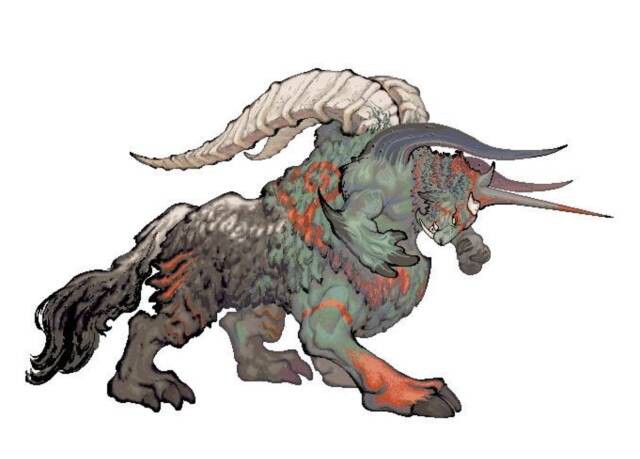
8. Taotie
Legend has it that a dragon gave birth to nine sons, each with different images and characteristics. The fifth son is called Taotie, a ferocious and cruel monster. According to the "Book of Mountains and Seas", its appearance is like a sheep's body, but its eyes are It grows under the armpits, has tiger teeth and human claws, has a big head and a big mouth. It is extremely gluttonous and eats whatever it sees. In the end, it is starved to death due to its own gluttony. Due to the image and characteristics of gluttony, it was used in later cultural traditions to describe the behavior and mentality of greed, violence and gluttony. The image of Taotie often appears in games, novels, comics, movies and other works, and is usually depicted as a vicious monster or a greedy and lazy character.
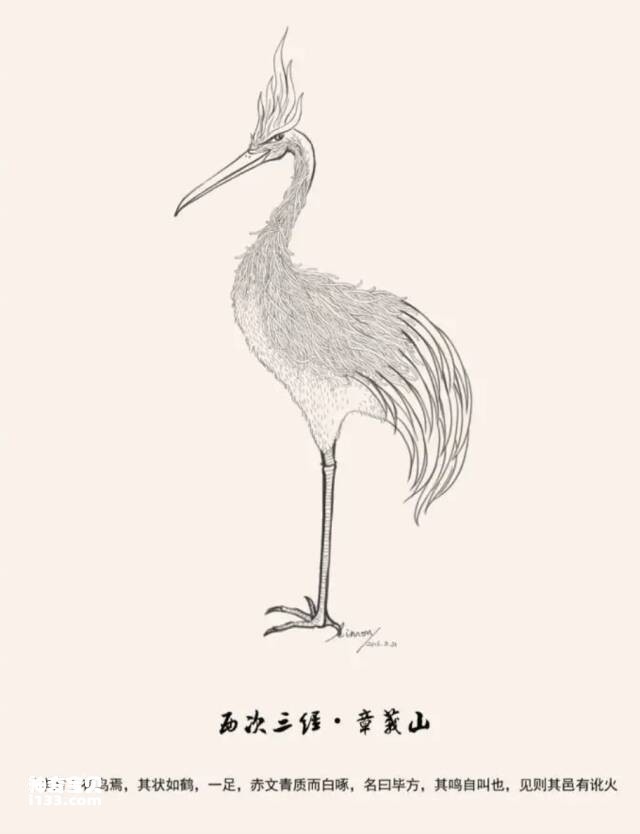
9. Bi Fang
In ancient Chinese legends, Bi Fang is described as a mysterious creature that looks like a red-crowned crane but has a human face, only one foot, a blue body with red spots, and a white beak. According to legend, Bi Fang lives among trees and cannot eat grains, but can swallow fire. At the same time, Bi Fang was also regarded as a sign of fire, and served beside the Yellow Emperor's chariot when he gathered ghosts and gods, and was later honored as the pet of the God of Fire. This mythical creature has been around for thousands of years and has important symbolic significance in Chinese culture.
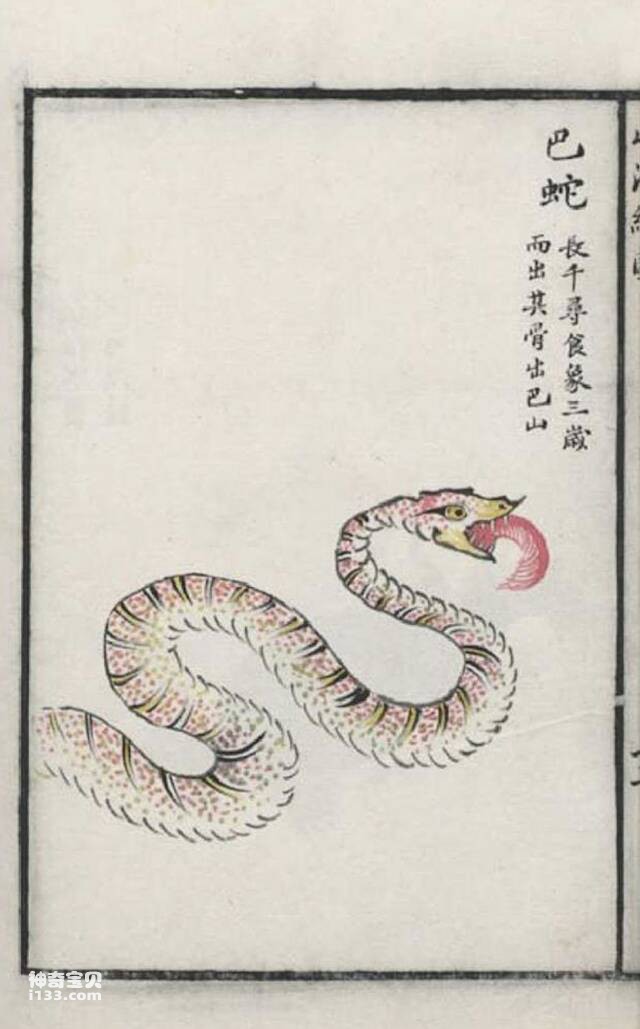
10. Snake repair
According to the "Book of Mountains and Seas", Xiu She is a ferocious beast with different shapes, such as black snake with green head, green, yellow, red and black. It usually lives in the water and eats other animals, even giant animals such as Elephants-Are-Endangered.html">elephants. Repair snakes attack humans and pose a threat to humans. Legend has it that the Yellow Emperor once sent the archer Dayi to kill Xiu Snake, and Dayi eventually cut it into two pieces. Xiu She's body turned into a hill, now called Baling.
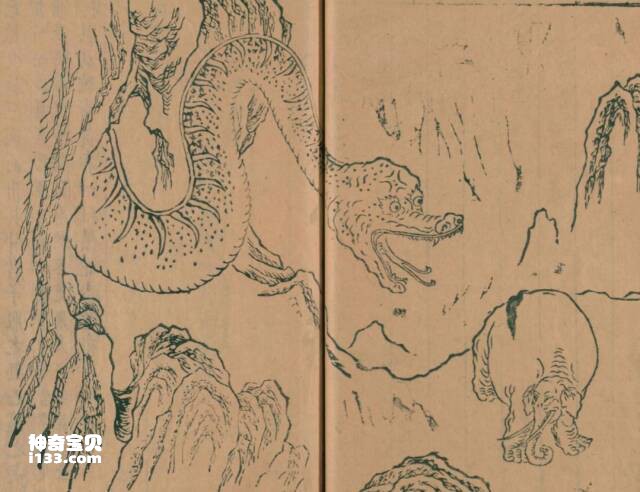
There were pictures in the Classic of Mountains and Seas in ancient times. Wu Renchen’s illustrated version of the Classic of Mountains and Seas in the Qing Dynasty was the earliest and most widely circulated. The book says that its pictures are derived from Shu Ya's re-illustrated edition, but only one hundred and forty-four "weird" pictures are taken from it, organized into five categories: spirits, exotics, beasts, feathered birds, and scales. Ma Changyi, a researcher at the Institute of Literature of the Chinese Academy of Social Sciences, selected 1,000 pictures of the Classic of Mountains and Seas from the nine existing illustrated books of the Classic of Mountains and Seas, and combined them with the text of the Classic of Mountains and Seas to write "Illustrated Commentary on the Ancient Book of Mountains and Seas", which is an important work on the current study of the Classic of Mountains and Seas.
animal tags:
We created this article in conjunction with AI technology, then made sure it was fact-checked and edited by a Animals Top editor.